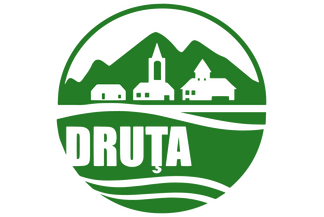Viișoara
History
The Republic of Moldova has several places with the name Viișoara. A village called Viișoara, established in 1964, is located 15 km from the town of Ștefan -Vodă. Another is located 33 km from the town of Edinet. The third village is our village Viișoara in Glodeni district.
The village of Viișoara is located in the north-west of the Republic of Moldova, near Prut River at the foot of the Domnească (Royal) Forest . The nearest urban centres are the town of Glodeni, 20 km away, and the town of Fălești (30 km). To the north-west, Viișoara is bordered by Cuhnești, to the north-east by the villages of Dușmani and Ciuciulea (6km), and to the south by the village of Chetriș. The main roads out of the village lead to Balatina, Fălești and Glodeni. There is also a country road leading to Ciuciulea and Chetriș.
The village of Viișoara appears on the map of Moldavia in 1840, i.e. it is a newer village. Our origin is from Viișoara (Edineț). At that time there was an epidemic in that village (about which nothing is known), but because of that epidemic many people died. Since then the village has been moved - at first it was on the Prut bank and was called Drăgușeni, after the name of the local nobleman. This landowner had a vineyard on the hill, a little further from the village, about 2 km away. When the tragedy of the epidemic happened, some of the people left the village, but most of them stayed.
The old epidemic village was burned down and the inhabitants moved to live on the hill, where the landlord's vineyard was. Old people say that if a misfortune befalls a man, he changes his name to avoid such calamities. Thus, the people of the then village of Drăgușeni called it Viișoara.
Moreover, historian Boris Nemerenco from Viișoara has established, based on documents, that the village of Drăgușeniin the Bessarabian region was closely related to the village of Drăgușeni in the Dorohoi region (Romania), as there were people with the same surname in these villages.
Several villagers say that the first inhabitants of Viișoara wanted to establish the village on the territory between the villages of Moara-Domnească and Chetriș, on the slope of a hill, which is called La ruptură: above the plateau is a very beautiful and picturesque area, with a pond next to it with an area of about 400 ha. The village also has wooded areas to the north. Various species of trees grow here: oak, juniper, ash, elm, acacia and wicker. It is a reserve that extends over the land of several villages. About 5 ha of this forest belongs to Viișoara.
At a distance of about 5 km from the village of Viișoara you will find the tourist objective "Zimbrăria Pădurea Domnească" (European bison habitat "The Royal Forest"), which is located on the administrative territory of the village of Viișoara.
You should definitely visit the bison habitat, which is located on the territory of the "Royal Forest" reserve, near the village of Moara Domnească (Royal Mill), the only place in Moldova where you can admire the bison.
The reserve is a 32 ha fenced area. It is a great tourist attraction. The European bison was brought to Moldova on 19 August 2005 under an inter-state agreement with Poland.
Some 131 species of plants and 27 species of trees and shrubs are included in the bison's diet. Looking to the future, we can say that the area of the reserve could support a micro-population of 15-17 bisons;
The European Bison (Bisonus bonasus) - is the only species of wild animals (of the bovine subfamily) to have survived to the present day.
In the history of our nation this powerful and magnificent animal personifies the force of nature, which had a traditional cult importance, it was a symbol of the native lands.
Beautiful places

In the shade of the secular oak
Near the village of Moara Domnească there are the green historians of our land, secular oaks, which are more than 200-250 years old, some of them reaching 30-35 m in height and 2 m in diameter.
Read more
The "Royal Pond" - a jewel of the village
The Royal Pond is a beautiful place for rest and recreation. The river "Căldărușa" flows into it. In the past, the Pond was the largest in Moldova, with a surface of 400 ha. The villagers say that in 1852 the pond, which then had 300 ha, burst its banks, flooding a large part of the village's houses
Read more
Bison's Habitat
Near the village of Moara Domnească is the "Zimbrăria", a fenced-in forest site covering 32 ha, with 7 bison. The bison is the only species of wild animal in the bovine family that has survived to the present day.
Read moreFigures
Turcan Taisia - PhD in pedagogical sciences and psychology; USP ,,Ion Creanga"
Alexei Cibotari - surgeon, city of Balti;
Valeriu Mereuta - interpreter/teacher, Prometheus High School, Chisinau
Anatolie Gorodenco - former Minister of Agriculture
Valeriu Nemerenco - former Pretor, Buiucani sector of Chisinau municipality;
Gureu Boris - Local councillor/director ,,Veaces-Grup"
Lilia Bicec - writer.
Video presentation
In the following video presentation, you will be invited to discover the beauty of the banks of the Prut River in the Republic of Moldova. This picturesque area is known for its idyllic landscapes, where the river Prut flows quietly through the hills


 ro
ro
 ru
ru

















